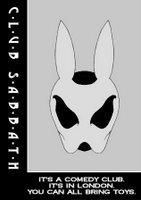Scribonia, known to poets as the Tattooed City, is indistinguishable in most respects from any other provincial city. It has its business and its retail districts, its blocks of flats and townhouses, churches and mosques, its libraries and City Hall, in which its citizens talk and shop and sleep and go about their business. Examining the city from the air, or from a satellite, one would perceive little of note.
Close up, however, is a different story. For every building of Scribonia – each wall and windowsill, each slate and steeple – is covered with writing. Loops and curlicues and upstrokes smother every shopfront, every station and tenement. Fountains and statuary, pavements and rooftops: each surface, from the bridges’ lowest foundations to the steeple of the tallest church, is etched with curled, reticulated characters – the arcane alphabet used only by Scribonia’s Guild of Graffitists.
Scribonia’s public services department tries its best, but even with some thousands of the population in its direct employ, scrubbing and cleaning at the bricks and flagstones every day, they cannot keep pace with the assiduous encroachments of the Guild.
Nobody knows who runs the Guild, or if it even exists. Everyone assumes that the artful vandalism must be co-ordinated: the only sane alternative is that every citizen, municipal cleaners included, secretly carries around a can of paint or marker pen to fill in any gaps they find in the all-pervading script. It may be that – as one dissident politician has concluded – the city itself is generating the inscriptions, dreaming the writing into existence every night through the subconscious workings of its fevered citizens.
Nonetheless, many Scribonians yearn to join the hypothetical Guild, and aspiring graffitists often overlay the dense designs with their own crude scrawlings.
Others – the majority – have become obsessed with understanding what the graffiti says. Its alphabet bears no resemblance to any others known: and yet its students have detected patterns, repetition, dialogue – even the work of individual hands. Many have tried to learn the language: if any have succeeded, they do not acknowledge the fact. It may be that success confers de facto membership of the Guild, with all the burden of secrecy that implies.
One school of interpretation, known as the Esotericists, believes that the graffiti is a blueprint: a detailed description, complete with architectural measurements and outlines, of another city. This city coexists with Scribonia, pervading it in this encoded form. Parts of the written city are demolished daily by the tireless sponges of the scrubbers, yet they can be rebuilt, or new structures created to take their place, with a few flicks of a Guildmember’s pen.
What is this city like? The Esotericists agree that it must be a far more elevated, purer place than grimy, dull Scribonia: a city of pure thought, of inspiration, where style is given life, unhampered by the demands of substance.
One day, they say, this city will not merely deface the present Scribonia: one day, its sheer weight of information will come to overwrite the mundane city, and Scribonia’s dull matter will give way to the immaterial design. A new age of enlightenment will follow, and the citizens will exist in an eternal harmony of intellect.
There will be no place for graffiti then, of course.
--
Visit the
Gazetteer of Invisible Cities at
Blind Atlas

